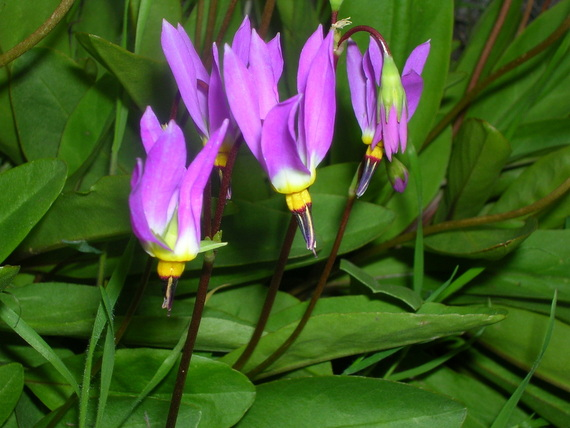In 1978, my wife Toni and I moved to a home in a neighborhood near the entrance to Lory State Park. I was drawn to the area because of similarities with my hometown in northwestern Pennsylvania – lots of dirt roads and primitive areas. In Ludlow, in the Allegheny National Forest, I could walk a couple of hundred yards and find beautiful spring flowers to enjoy. Fortunately, the little town of about 500 people had a Boy Scout troop. When I was twelve, I earned a botany merit badge by creating a “book” on wildflowers. The book has no photos, but it has many pressed samples and descriptions of flowers. I’m surprised that the samples are still in such good shape after so many years.
Now I satisfy my passion for observing and photographing flowers by visiting our beautiful Lory State Park.
With such a varied topography – meadows, valleys, rocky hillsides, streams, waterfalls, and a shoreline; and an elevation that ranges from 5,430’ at Horsetooth Reservoir to 6,782’ at the top of Arthur’s Rock, we find a wonderful variety of wildflowers.
In mid-March, along the Shoreline Trail, Toni and I saw salt-and-pepper. One of the earliest wildflowers, the petals are the “salt” and the red anthers are the “pepper.” Typically, the petals are white, but can occasionally be a deep red. We expected to find western springbeauty on the same walk, but had to wait a week to see this shy, delicate flower that hides in the bushes at the point in the trail where hikers catch the first glimpse of Horsetooth Reservoir.
I encountered blue-eyed Mary on Timber Trail in mid-April. One of the tiniest flowers in the park, it is easily overlooked. I always find it in large clusters in shady places. I have no idea why “Mary” is in the name but I assume the two strikingly blue petal lobes are the “eyes.”
May brings blooms to our native mountain mahogany. This shrub is ubiquitous on our property as well as in the park. The most intriguing feature of this plant is the way the seeds behave. By August, the seeds have formed in clusters on the shrub stems where each seed has its own fuzzy, coiled tail. After the seed falls to the ground, changes in humidity cause the tail to coil and uncoil, burrowing the seed deeper into the earth. Amazing!
June is when Toni and I find spotted coralroot, a member of the orchid family, on the mid-section of the Well Gulch Nature Trail. With the exception of the bright, white petals with their delicate red spots, this plant is a reddish brown because it has no chlorophyll. If you start at Homestead Picnic Area and follow the trail north just beyond the junction with Overlook Trail, this is where you will find most of these beauties. You can also start at the Eltuck Group Picnic Area and follow the Well Gulch Trail to Homestead.
July brings our first-of- the- year look at bottle gentian, most often seen on the Mill Creek Link Trail. The plants are so named because of the cluster of rich blue bottle-shaped flowers. Often, the petals forming the “bottle” are so close together you cannot look into the “bottle.”
By July’s end, virtually all park flowers have arrived. Those beauties that arrive early, sadly, often do not stay around for more than a couple of months
These are just a very few of the many flowering shrubs to look for in the park: waxflower, boulder raspberry, ninebark, Fendler’s buckbrush, and wild plum. The plum is abundant, proudly displaying delicate white flowers that fill the air with a lush, beautiful scent.
It is very hard to pick favorites, but here are four of our favorite Lory State Park wildflowers: i) darkthroat shootingstar (Dodecatheon pulchellum), ii) pasqueflower (Pulsatilla patens ssp. multifida), iii) plains paintbrush (Castilleja sessiliflora), and iv) showy Townsendia (Townsendia hookeri). All of the flowers have special features which continue to amaze and delight us.
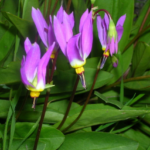
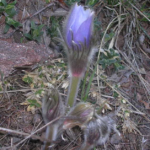
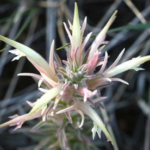
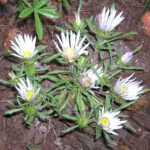
This is a fitting quotation by an unknown author: “The world is full of magic things, patiently waiting for our senses to grow sharper.”
To see pictures of the flowers and shrubs mentioned above, and 260 more of the wildflowers found in the park, please visit:
https://www.fredswildflowers.com/lory-state-park.html
I hope to add more this year. Seasonal times for finding flowers on fourteen park trails are provided. A section of the website groups flowers by similar color and shape, a feature I hope will help people learn the common and scientific names for flowers.
For information about when and where to enjoy Lory’s wildflowers, visit:
http://lorystateparkwildflowers.weebly.com

